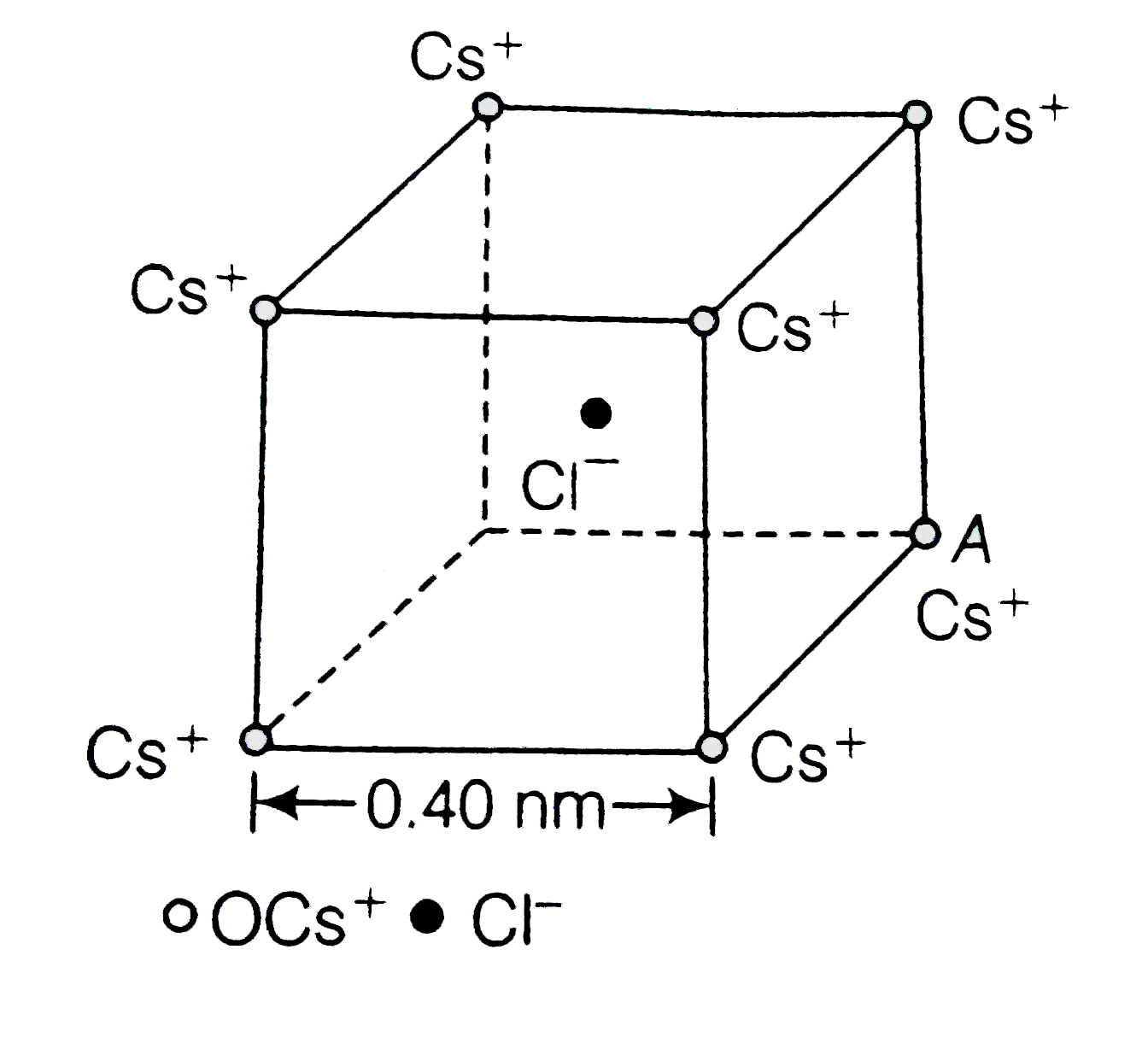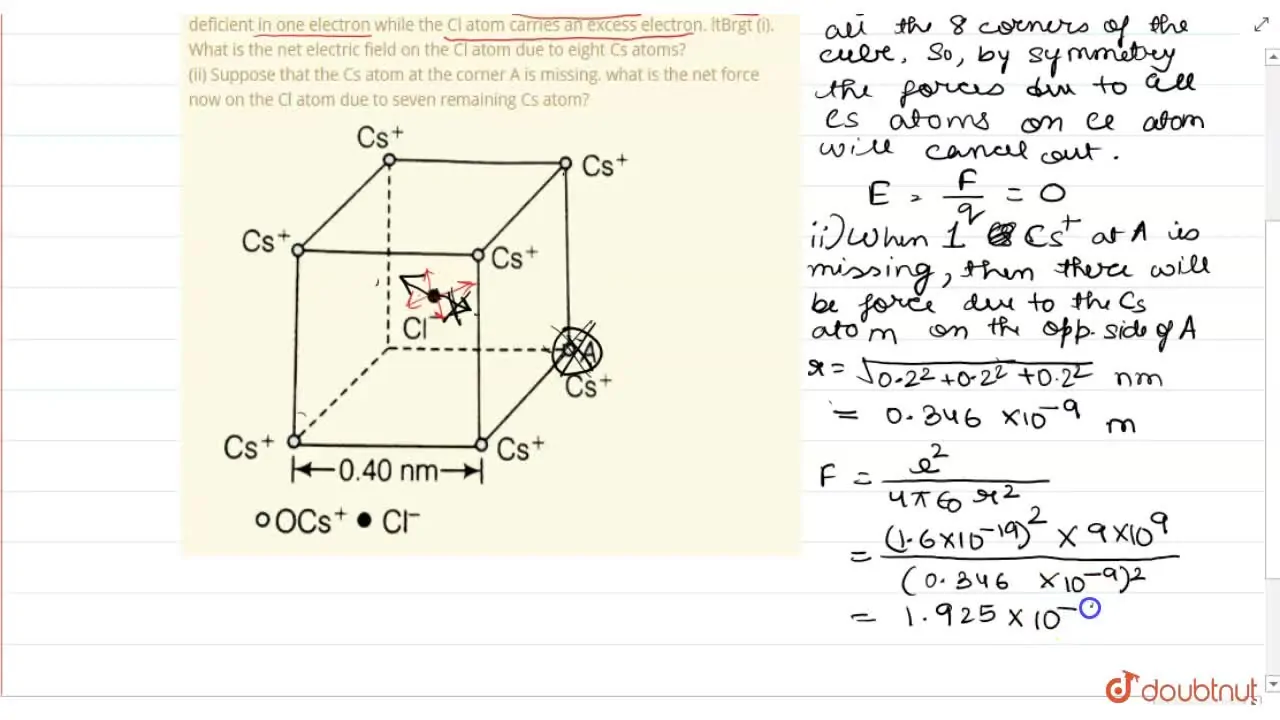Figure represents a crystal unit of cesium chloride, CsCl. The cesium atoms, represented by open circles are situated at the corners of a cube of side 0.40 mm, whereas a Cl atom is situated at the centre of the cube. The Cs atoms are deficient in one electron while the Cl atom carries an excess electron. ltBrgt (i). What is the net electric field on the Cl atom due to eight Cs atoms?
(ii) Suppose that the Cs atom at the corner A is missing. what is the net force now on the Cl atom due to seven remaining Cs atom?

(I )From the given figure, we can analy se the chlorine atom is at the centre of the cube i.e., at equal distance from all the eight coerners of cube where cesium atoms are placed. Thus due to symmetry the forces due to all Cs tons, on Cl atom will cancel out.
Hence, where F=0
(ii) Thus, net force on Cla atom at A would be:
where r=distance between Cl ion and Cs ion.
Applying Pythagorous theorem we get
Now,
Related Playlists
Similar Questions
Figure represents a crystal unit of cesium chloride, CsCl. The cesium atoms, represented by open circles are situated at the corners of a cube of side 0.40 mm, whereas a Cl atom is situated at the centre of the cube. The Cs atoms are deficient in one electron while the Cl atom carries an excess electron. ltBrgt (i). What is the net electric field on the Cl atom due to eight Cs atoms?
(ii) Suppose that the Cs atom at the corner A is missing. what is the net force now on the Cl atom due to seven remaining Cs atom?
 View Solution
View SolutionWhen a Cl atom gains an electron, it gets a charge of
View SolutionIf an atom has 2 excess electrons, then what is the charge on this atom?
View SolutionA solid has a structure in which W atoms are located at the corners of a cubic lattice, O atom at the centre of edges, and Na atom at the centre of the cube. The formula for the compound is
View SolutionIf an atom is present in the centre of the cube, the participation of that atom per unit cell is:
View SolutionA solid has a structure in which W atoms are located at the corners of a cubic lattice, O atom at the centre of edges, and Na atom at the centre of the cube. The formula for the compound is
View SolutionA solid has a structure in which W atoms are located at the corners of a cubic lattice, O atom at the centre of edges, and Na atom at the centre of the cube. The formula for the compound is
View SolutionDisplacement of electron in C-Cl bond towards Cl atom is called
View SolutionA solid has a structure in which W atoms are located at the corners of the cubic lattice, O atoms at the centre of the edges and Na atom at the centre of the cube. The formula of the compound is
View SolutionA compound formed by element A and B crystallize in the cubic structure where A atoms are at the corners of a cube and B atoms are at the centre of the body. The formula of the compounds is
View Solution


